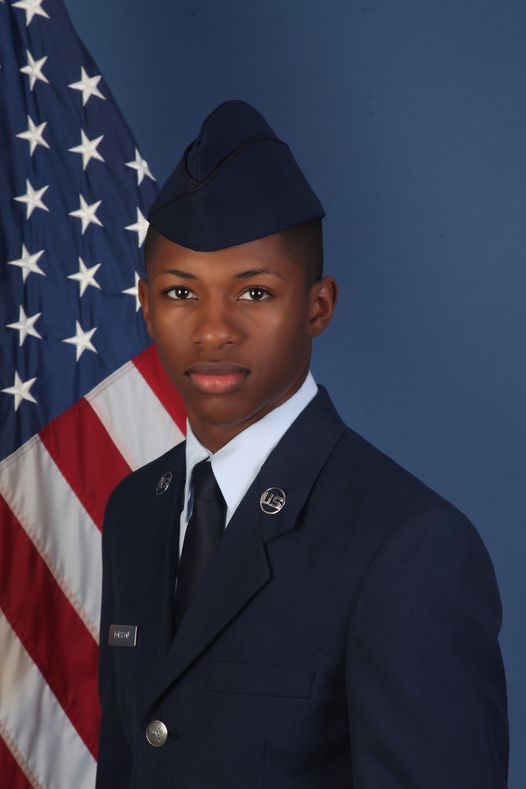I could tell the first time I saw his work that Harvey Kurtzman (1924-1993) was a great modern artist. His drawing style was simple and bold, with brave curves, fat brushstrokes of ink, dramatic lighting, and crisp composition. Of course, I was 11 years old, had never been to an art gallery, and didn't have the faintest idea what "modern art" was. Kurtzman was simply my favorite artist in the EC comic-book lineup, an over-the-top gory roster including Vault of Horror, Tales From the Crypt, Crime Suspense Stories, Frontline Combat, and Two-Fisted Tales. EC changed its name from Educational Comics (yeah, right) to Entertainment Comics in 1951, and damn near singlehandedly sparked the Kefauver committee comic-book hearings of 1954, which resulted in the censorious seal of approval that made publishers take out all the good stuff: bullet holes, rotting corpses, ax murders, and fragmented bodies flying through the air from hand-grenade explosions. Like I said, I was 11.
The subsequently bowdlerized and nobler EC comics, such as Aces High (World War I dogfights) and Valor (broadswords and armor), tanked, and the company gambled everything on its new humor comic book, called Mad. I read it surreptitiously in the back of the class in junior high in Los Angeles, where my other delinquent tendency was occasionally cutting class to watch the filming of Rebel Without a Cause up in Griffith Park. Although the humor was right up a 13-year-old's alley, the important thing about Mad for my cartoon-obsessed friends and me was the drawings. We all agreed that Jack Davis—the Deep Southerner who drew clown-footed hayseeds, flies circling their stubbled faces, with a wicked back-and-forth pen line—was numero uno. (One of my cohorts became a college professor whose greatest accomplishment—he'd tell you—was getting Davis to illustrate the textbook he wrote.) And most of us also thought Wally Wood, with his busty parody of Lois Lane and a clueless "Superduperman" rendered in Michelangelo-esque anatomy and flickering chiaroscuro, was second. But after that, our tastes diverged. A majority went for the cluttered traditional cartooning of Will Elder, with his silly signs ("Potzrebie!") popping up everywhere. But I stuck with Kurtzman's cuddly version of German expressionism. It's probably what eventually turned me toward the weird occupation of abstract painter.
Little did I know that Kurtzman was, in fact, the brains and driving force behind the whole Mad enterprise. I found out about Kurtzman's encompassing genius while I was in college, but during the years afterward, let my appreciation slip down the memory hole. Lucky for me, a beautiful new book, The Art of Harvey Kurtzman (2009), brings it all back—and more.
Kurtzman was born to Jewish-immigrant parents in Brooklyn. The precocious Harvey skipped a grade, took the subway to art classes at the Pratt Institute at the age of 8, and attended the High School of Music & Art in Manhattan. He was drafted in 1943 but was never sent overseas, instead being stationed in North Carolina. Among other duties, he was assigned to turn out training posters and comic strips for the base magazine. Kurtzman had planned on being an artist, but his old masters were comic-strip greats Chester Gould (Dick Tracy), Alex Raymond (Flash Gordon), Milton Caniff (Terry and the Pirates), and, most of all, Will Eisner (The Spirit). When he finally found work at a publishing company where Stan Lee (later of Spider-man fame) was in charge of comics, because Lee was a relative of the owner, Kurtzman was assigned to do a little filler strip called Hey Look! It was smart and inventive (a character shakes the "twisted nails" novelty puzzle so hard he comes apart instead of the puzzle), but readers hated it. When the company conducted a poll under the guise of "you be the editor," Kurtzman's strip came in dead last. But his new wife and co-worker, Adele, was assigned to count the ballots. Surprise! Hey Look! was actually the company's most popular offering, ensuring Kurtzman steady work.
The comic-book world, like any other creative endeavor that becomes a business, could get a bit intense. Stan Lee once sent an artist home and docked him a day's pay because he didn't put down his newspaper and start drawing at exactly 9 a.m. At EC, the publisher reportedly turned to an artist struggling to illustrate Picture Stories From the Bible and screamed, "I don't care how long it took Moses to cross the desert, I want it in three panels!" And Kurtzman, who welcomed the creation of Mad partly for relief from the long hours he had to work researching the stories for EC's war comics, ended up a rigid authoritarian when it came to other artists following his story layouts. In turn, he couldn't stand the publisher's control over him at Mad, so after just five issues of the new magazine-format Mad (costing a whole quarter instead of just 10 cents), he quit in 1955 to jump to ... Playboy.
Well, not exactly Playboy itself, but to a new, slick-paper, expensive (50 cents!), Hugh Hefner-run humor magazine called Trump, which Hefner said would enjoy a practically unlimited budget. It lasted just two issues before Hef—caught between a distributor's bankruptcy and overspending on new offices—pulled the plug. Kurtzman, who throughout his life was nothing if not resilient, started another magazine, this time owned by the artists who created it, called Humbug. Nobody involved knew how to run a business, however, so it, too, failed. In 1960, Kurtzman gave starting another magazine one last shot, and called it Help! This time he enlisted such celebrity comedians as Sid Caesar, Jackie Gleason, and Jerry Lewis to grace its covers, published American versions of the Italian photos-plus-dialogue-balloons stories known as fumetti, starring among others an unknown British actor named John Cleese, then appearing off-Broadway, and an aspiring cartoonist named R. Crumb. Kurtzman also hired himself a very bright young editorial assistant. Her name was Gloria Steinem.
Naturally, Help! folded, but not before a pretty good four-year run. During and after the magazine's tenure, Kurtzman also produced a couple of remarkable works of art. The Grasshopper and the Ant, a morality tale about living for today vs. planning for tomorrow, done in gorgeously yet economically graceful watercolor and ink, ran in the May 1960 issue of Esquire. (If you find that one in your uncle's basement, do not—repeat, Do Not!—throw it away.) And he also produced a pioneer graphic novel, which he started back in 1954 and pecked away at for a decade. The majestically moody Marley's Ghost was based on Dickens's A Christmas Carol, but nobody would publish it. Then Kurtzman got lucky, after a fashion.
He and Bill Elder had collaborated in the early 1960s on four issues of an Executive Comic Book, starring a naively virtuous young executive, Goodman Beaver, who comically prospers precisely because he's oblivious to the backstabbing going on around him. Change Beaver into a female, give her enormous breasts, have the backstabbers falling all over their drooling selves trying to seduce her, picture it all in full, painterly color, and what do you have? Right: Little Annie Fanny, the most successful effort (a quarter-century run in Playboy, 1964-1988) of Kurtzman's long and varied career. But in a way, it's a pity. Time treats Two-Fisted Tales, Mad, and Help! rather kindly; looking back on them now, you can appreciate what they were trying to do in the context of their times. Annie, on the other hand, exudes a perpetually adolescent, yuk-yuk obsession with casual sex in the insufferable guise of a pseudo-sophisticated amusement at other people's obsession with sex. Only one in a hundred panels—visually snappy though they are on the page—is even remotely funny.
The Art of Harvey Kurtzman, however, makes even Little Annie Fanny artistically fascinating, with a brilliant set of tracing-paper pages showing the development of a spread from a first pencil layout to the finished product. But the book also does something else, something much better: it makes hilariously and beautifully clear the overarching talent of Harvey Kurtzman. To paraphrase one of Kurtzman's laughably blunt magazine covers: don't buy those other hoity-toity art books. Buy this one instead.
Uncommon Knowledge
Newsweek is committed to challenging conventional wisdom and finding connections in the search for common ground.
Newsweek is committed to challenging conventional wisdom and finding connections in the search for common ground.
About the writer
To read how Newsweek uses AI as a newsroom tool, Click here.






